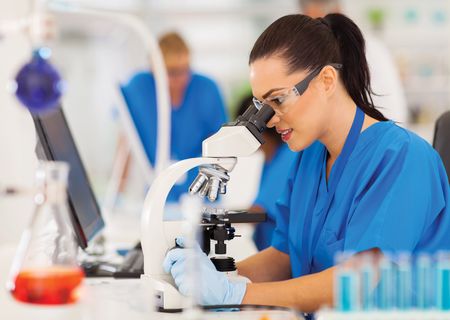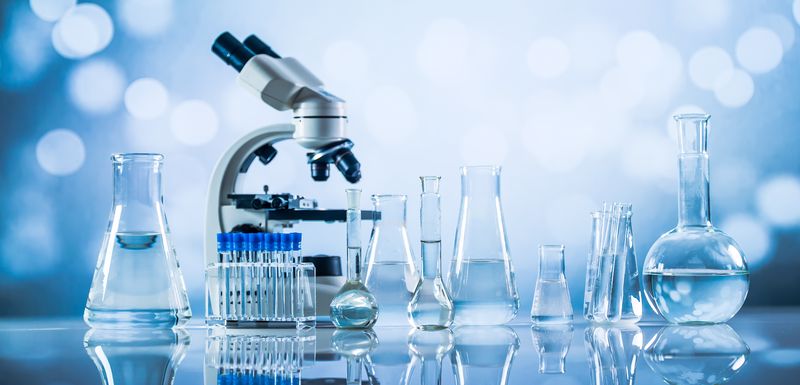Are you building a new lab? Do not know where to start>, what equipment is right for you? In this article, we will review for you some things to consider when setting up a new lab.
Types of laboratories
Main types of laboratories: biological laboratory, food laboratory, materials laboratory, environment, energy, algae, solar, building and roads, medical equipment, bitumen technology,Water treatment, beverages, calibration, aviation, automotive, plastics. Every lab needs the right equipment for it. Each lab will need a different type of instruments and staff. Therefore it is important to match the appropriate equipment.For example, a laboratory for chamber cultures will be required for sterile areas, autoclaves, freezers, incubators, shakers and centrifuges.
How to Build your Lab?
It's time to think about how to design your lab. Think carefully about how to optimize your lab work to get the best results. Separate the lab into different areas, according to types of Dangers.Design the lab equipment around those areas.Areas that are likely to have more traffic of people should not be with the hazardous materials.Different areas need to be created for the general population and lab workers so that they do not have to meet each other. Also produce safety signage accordingly.Make sure that the entrance to the laboratory is restricted to people who are allowed to enter in order to avoid any Faults.Another good safety precaution: Make sure there is more than one exit from the lab in case of an emergency.You can appoint an architect to help you design the lab.Laboratory space should be left for heavy equipment so that workers can move freely.It is very important to know the building regulations in your country.
Important points in laboratory design:
-Laboratory Ventilation-Planning for sufficient ventilation.
-Design a transition capability in the lab.
-Biological cabinets must be used to keep workers safe.
-Fire safety regulations must be observed like Emergency exits and fire doors ,Fire detection systems, Firefighting equipment, Safe storage of hazardous substances.
-Care should be taken to use storage cabinets for chemicals.

Laboratory safety
Lab safety is an important thing. When you build your own lab, you are responsible for the safety of the lab and the workers. Therefore you will need to set the procedures to save your team life. You need to appoint a safety officer to be in charge of the safety issue in the lab.It is important to have a training program or mandatory safety workshop for your employees that will introduce them to the possible dangers of working in a lab.Make sure your lab is equipped with appropriate safety equipment. Some of the emergency items you will need in the lab include fire extinguishers, fire blankets, emergency exits, and protective equipment.
Part of this responsibility is: identifying areas of public access where anyone may go; controlling access to spaces and rooms where researchers work; protecting intellectual property; and controlling access to hazardous materials. In addition to avoiding the entry of unauthorized persons. Use secured doors controlled with readers and access cards or other security devices stronger than traditional keys.
Laboratory equipment for new laboratories
Your next step is to start purchasing laboratory equipment. But before you start ordering devices, be sure to first check what your lab needs and what equipment you already have.
So what products should be in the lab:
- Basic laboratory equipment that can be found in almost every laboratory: precision balances and analytical balances, vortex, hotplates and magnetic stirrers, desiccator, refrigerator, bonsen.
Hoods/Cabinets: A hood is a fan compound that offers protection to the user, the product and the environment from bacteria and hazardous materials. biological cabinet, fume hood, laminar cabinets are available.
-Water bath: A hot water bath for a laboratory is the best way to heat samples in a laboratory. A water bath is a must-have device in any type of lab.
Autoclave-Autoclave uses pressure steam to sterilize bacteria, viruses from various vessels. Autoclaves are found in many medical clinics, laboratories and other places that need to ensure object sterility. Laboratory autoclaves are designed for research institutes, universities, microbiology, food and chemical laboratories.
-Microscopes- A microscope is a device used to visually magnify objects that are too small to be seen by the eye without magnification. A microscope is an important laboratory equipment and it comes in a variety of types such as: digital, video, biological and fluorescence.
-Incubators for incubation of samples in biological laboratories, viruses, food and more like incubator shaker.
-Safety cabinets for storing hazardous materials -Chemicals, solvents.
-Laboratory refrigerators,laboratory freezers for storing materials at low temperatures.
-Chillers- Cold water-based circulation systems used to evacuate heat from facilities and processes that produce heat like reactors.
-Mills, blenders and homogenizers.

Buy Laboratory equipment
After going through the entire article, now is the time to purchase.
Some important points:
-Purchase a product that suits you exactly according to your needs. Check volumes, weight, size, heating and more.
-Purchase from a reliable company with many years of experience. Check what kind of warranty the company gives and what their service is.